Tasting: 5 Whiskeys From Penelope Bourbon (Rio, Tokaji, Barrel Strength)
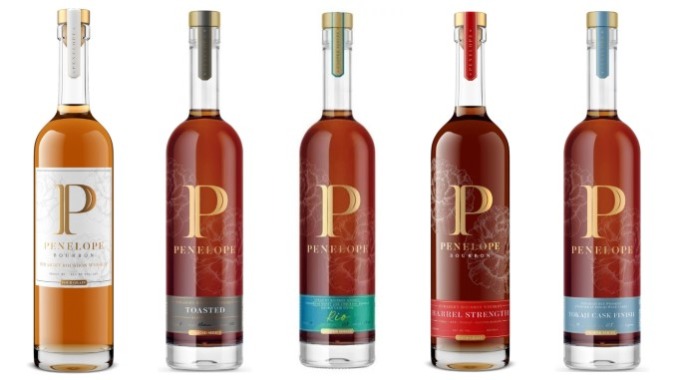
It’s interesting how a first impression of a spirits company can stick with you for years, even as that company grows and matures well beyond the initial flagship product you may have once sampled. Case in point: When I first tasted Penelope Bourbon it was way back in 2019, at a time when the company’s flagship wasn’t yet referred to as Four Grain Bourbon, and when one of the primary selling points of the early marketing copy was its “light taste,” something I’ve rarely seen before or since. Suffice to say, the 80 proof spirit marketing itself as easy drinking didn’t necessarily make the biggest impression.
But five years later, the average whiskey fan is far more likely to be familiar with Penelope Bourbon as a company. They’ve vastly expanded their core lineup, incorporating more mature sourced distillate and a variety of secondary cask finishes. Their Cooper Series, which “pairs Penelope with wine casks from the finest wine making regions,” has generated steadily increasing buzz–particularly the more recent release of Penelope Rio, which seemed to have the Virginia bourbon geek market in a measurable tizzy with its combination of honey barrel and amburana wood finishing.
Seeing this increasing visibility in the whiskey world, I realized that I had never really returned to more widely sample the Penelope Bourbon lineup in the years since I first tasted it, so that’s exactly what we’re going to do today.
1. Penelope Bourbon Four Grain
ABV: 40% (80 proof)
MSRP: $40
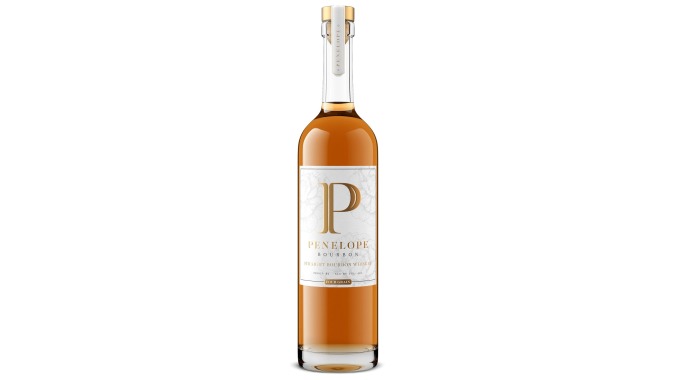
Named for the newborn daughter of founders Mike and Kerry Paladini, Penelope Four Grain is effectively the company’s low-cost (relatively) introductory flagship, a blend of 2-3 year old straight bourbons from three different mash bills. Those mash bills include both rye bourbons and wheated bourbons, effectively making this a four grain product in the process. The company doesn’t specifically note what it sources from where, but it does note both MGP of Indiana and Bardstown Bourbon Co. as its sourcing partners, which gives them plenty of options. This is also the product that Penelope once marketed with passages about its “lightness,” but presumably that’s no longer being used as a primary selling point now that the brand has developed more whiskey geek cred.
On the nose, Penelope Four Grain is indeed rather light, flashing sweetened cereal grains and vanilla extract, though it’s a bit hotter here than you’d think for the baseline 80 proof. On the palate, this presents with plenty of sweet fruit in particular, touching on apricot and lemon-orange citrus, with more vanilla cream. Surprisingly, there’s also some leathery-like character and mild earthiness, and modest drying tannin. The main knock is that the ethanol character here is a bit on the harsh side, feeling a tad “raw” as so many younger bourbons do. All in all, the fruit-forward notes are nice, but this blend remains a bit too immature for my own taste.
2. Penelope Toasted Bourbon
ABV: 50% (100 proof)
MSRP: $70
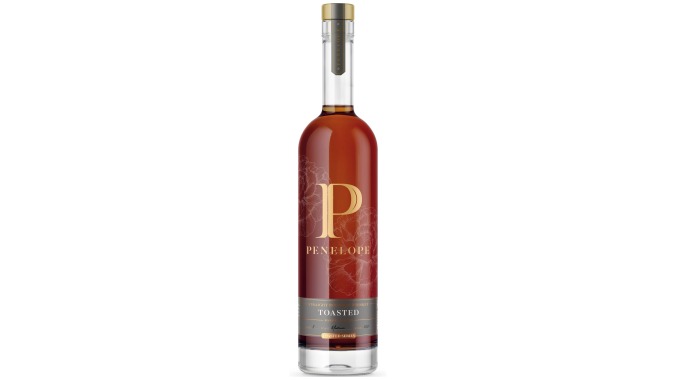
Penelope Toasted Bourbon draws upon more mature, 4-year-old stocks of what is potentially MGP bourbon, looking at its high-rye mash bill, and then finishes that whiskey with a secondary maturation in newly charred, heavy toast barrels. The result very much leans into the transformational aspects of heavily toasted American white oak.
On the nose, this one really celebrates the toasted wood, which contributes notes of caramel corn (with butter), marshmallow and particularly coconut. There’s also plenty of baking spice, suggestive of cinnamon and nutmeg. On the palate, it arrives with a big explosion of spice–tons of cinnamon and toasted oak spice, with flashes of hot ginger and brown sugar. Like many younger bourbons with toasted finishes, it does extract some ample wood tannin from the secondary finish in particular, making each sip end on the drier side–not a bad thing, but it means this dram reads as less sweet and decadent than you might expect when first nosing it. If toasted barrel finishes are your thing, this is probably one you’ll want to check out.
3. Penelope Barrel Strength Bourbon
ABV: 57.6% (115.2 proof)
MSRP: $65
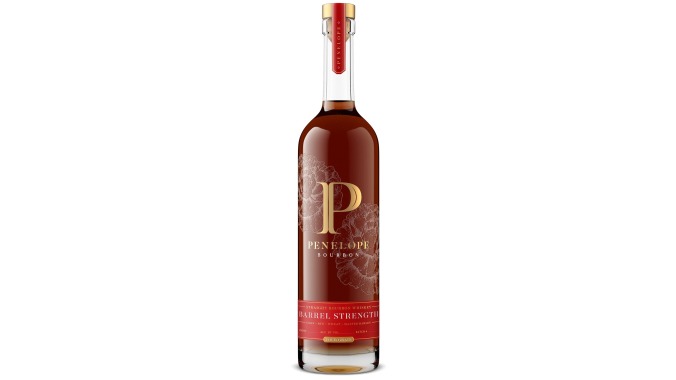
This cask strength offering is another blend of three mash bills, presumably the same three that make up the Four Grain, albeit with a 4 year age statement and a much higher strength this time around. The product one-sheet specifically says it’s a blend of mash bills “distilled in Indiana and Kentucky,” so that more or less confirms that both MGP and Bardstown Bourbon Co. distillate is in here, which are some pretty good bedfellows. The goal here is presumably to offer a decent value on a readily available cask strength bourbon expression.
On the nose, this one conveys plenty of caramel and honeycomb, with a nice waft of charred oak. I’m getting some slightly floral rye-type characteristics, though there is of course also wheat in the mash as well, which does contribute a slight biscuity nature. On the palate this is sweet and a little grassy, with candied orange fruit and toffee. There’s a “cooked” aspect to the vanilla that reminds me of custard or flan, with a little stem ginger, into significant spice, barrel char and slightly resinous oak. The sweetness level here in particular is dialed in nicely, while the ethanol is significantly more rounded out for the proof than in the Four Grain. All in all, this is definitely the superior expression of Penelope Bourbon, and a solid all-around dram.
4. Penelope Tokaji Cask Finish
ABV: 53% (106 proof)
MSRP: $90
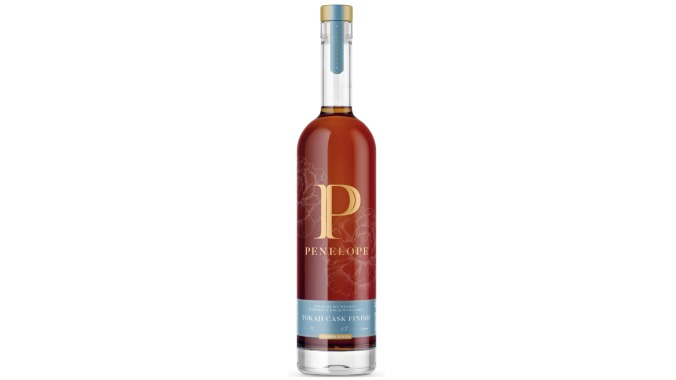
It’s actually quite easy to miss that Penelope Tokaji is rye whiskey rather than bourbon, given that Penelope primarily is bottling bourbon-based blends–also, the word “rye” never appears on the product page for whatever reason. Regardless, this is actually quite a promising concept: 8-year-old MGP rye, at an advanced proof point, given a secondary finish in casks previously used to mature Tokaji wine from Hungary. This promises to give a richer and more fruit-forward profile to the universally recognized, classic MGP rye recipe, which is a style of finish I typically think works well with MGP’s rye distillate.
On the nose, this is warm and spicy, evoking grilled pumpernickel bread with dark fruit. I’m getting some antique leather and also cherry compote, slightly cooked in nature. ON the palate this hides the proof quite well, and comes across as more nutty than most MGP rye, with the barrels having added a slight oxidative nuttiness that is kinda-sorta evocative of PX sherry. This is joined by notes of tobacco and caramel richness, dried herbs and rich baking spice, with plenty of pepper. The overall effect and cask finish evokes some of the even older MGP rye I’ve sampled in the past–this 8 year age statement certainly isn’t young, but this one evokes certain 10-12 year MGP ryes. A very nice melding of sweet and spicy elements.
5. Penelope Bourbon Rio
ABV: 49% (98 proof)
MSRP: $90
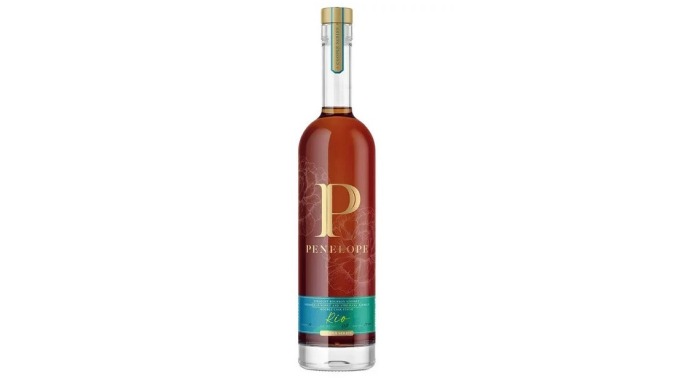
Penelope Rio is one of the company’s most unusual and distinctive releases to date, fully embracing two of the particular finishes that have become extremely popular (and contentious) among whiskey geeks in the last two years, in the form of honey barrel finishing and Brazilian oak, aka amburana. This one is a 4-6 year old blend of the company’s core bourbon blend, receiving two separate finishes, first in American honey barrels and then in amburana. As the company puts it, “the two make perfect dance partners, rich and sweet, with surprising depth.” Anyone who has come across amburana finishes in the last couple of years knows how completely unique and distinctive this type of wood is, and it tends to engender strong responses whether positive or negative. Suffice to say, no other wood contributes this particular dimension of sweet-spiciness, which I have often found evokes intense cinnamon and raisin-like dried fruit.
On the nose, Penelope Rio has the over-the-top spice that only amburana gives you. It’s also quite buttery, with the dried fruit and spice evoking oatmeal raisin cookies that have just come out of the oven. Rich cinnamon and dark dried fruit on the palate also give way to brighter pops of orange citrus and vanilla sweet cream, along with toasted coconut. The “cinnamon and oatmeal cookie” character here is quite bombastic, really coating the tongue with spice and lingering honey candy/toffee chews. Obviously, this reads on the sweeter side overall, with a very distinctive presence that is probably of the love-it-or-hate-it variety. If you’ve enjoyed other amburana finishes in the past, you’ll likely enjoy this one as well.
Jim Vorel is a Paste staff writer and resident craft beer and liquor geek. You can follow him on Twitter for more food and drink writing.






































